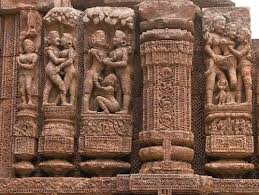AI WEIWEI: NEVER SORRY


On Tuesday December 4th, I attended the UMMA’s Heroes and Icons Film Series. Every Tuesday night at 7 pm, the Student Programming Advisory Council hosts a film in the auditorium of the UMMA, featuring pioneering artists who have made strong statements through their life’s work. This week featured China’s most infamous and controversial artist Ai Weiwei.
If you don’t know anything about Chinese history or its contemporary art movement, thats ok. I will give you the briefest and most topical- and opinionated- overview: in China, the government imposes very strict and fearful censorship on the public expression of its people. This issue has been of particular debate in the past decade because of the rise of social networking and Internet communication. Ai Weiwei is an international artist who has made numerous controversial pieces since he began his work int he early 70’s. Most recently, he has created a photographic documentation daily life in China. His gallery space is unconventional however; his exhibition is displayed via Twitter.
In 2008, a massive earthquake in the Sichuan province shattered the lives of thousands of citizens, many of whom were children attending a poorly constructed public school building. The government tried to hide the extent of the destruction by refusing to release numbers of casualties or names of victims. Infuriated and inspired, Ai Weiwei ventured to the Sichuan province and began documenting and Tweeting his findings. As you might imagine, the government was displeased with the dissemination of his opinions and came to his hotel room late at night. They kicked in the door and entered unwarranted. The rolling camera captured the sound of a police man hitting Ai Wei Wei’s head.
One year later, the artist finds himself in Munich trying to build an installation to honor the lost lives of the children in the Sichuan earthquake when he discovers that the lingering trauma from the beating will require surgery. The premise of the film, therefore, follows Ai Weiwei’s recovery process and continued defiance of government restriction through his artwork. This particular installation is a mosaic of 70,000 children’s backpacks hoisted onto the façade of Haus der Kunst, a German building connected to Adolf Hitler and the Nazi regime. This statement, called “Remembering,” is one that is difficult to forget.

Film maker Alison Klayman tells a very detailed story of an irreverent and soulful man who has powerfully challenged the fundamentals of the Chinese society through his artwork. I was particularly excited to see this film for that reason AND because I spent the summer in Beijing interning at an architecture studio that is right across the street from Ai Weiwei’s! The second image above (the turquoise door) is the entrance to his studio Fake in ArtZone Caochangdi. That was the view I saw every single day for months whenever I exited or entered my studio. Unfortunately, however, I never got the chance to see Ai Weiwei. That is partially because he was on house arrest the entire time I was there. During his trial, a group of policemen blocked the street and tried to stop him from attending. A very dramatic, 24-hour police stake-out took place on our block for over a week, involving trucks, cameras, and many men in uniform. There was a great deal of publicity on the conflict, and our studio’s exterior was featured here in the New York Times! See the elderly onlooker peering out from behind the bricks in the back? I know her!






